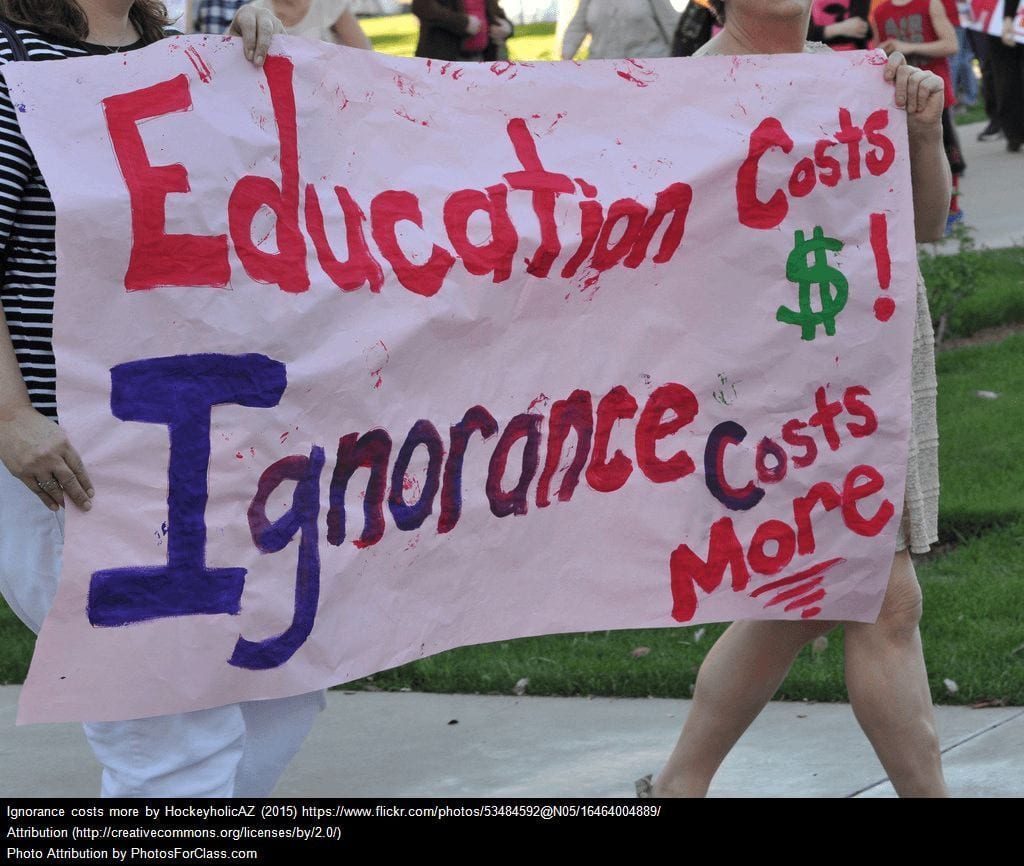Editor’s note: This article was produced with support from the Education Writers Association Reporting Fellowship program.
In a state full of rural, tucked away corners, Lincoln County is one of Montana’s most rural and tucked away.
The county of 20,000 people is located in the state’s far northwest corner, bordering Canada and Idaho’s panhandle. Its communities are dotted around the Kootenai National Forest, whose 2.2 million acres of firs, pines, spruces and towering mountains define the craggy landscape.
Libby, the county seat of 3,100 residents, is 69 miles from Eureka, the county’s second-biggest city of 1,500 residents.
Lincoln County is rural and rugged, forged by industry and ecology and steeped in a complicated history of extraction, exploitation and economic struggle. It is a place where everyone knows someone who knows your cousin — a place where the future is still being dug out of the past.
Related: Interested in innovations in the field of higher education? Subscribe to our free biweekly Higher Education newsletter.
Montana’s changing economy is palpable in Lincoln County, where formidable mills and mines once powered its small towns. The area used to be a historic powerhouse of timber and vermiculite production before shifts in the natural resource economy in the 1990s and 2000s marked the closure of nearly every local timber plant and Libby’s vermiculite mine, leaving thousands unemployed.
At the vermiculite mine, workers for decades were exposed to deadly asbestos fibers that killed hundreds, and trains carrying asbestos products blew toxic chemicals across town. As of 2021, 694 Libby residents had died of asbestos related diseases. The mine’s owner, the W.R. Grace Company, kept workers in the dark about the dangers of asbestos exposure.
It is under the shadow of the shuttered mills and mines that Lincoln County is forging ahead, crafting a future that community leaders hope will honor its history while breaking free from its dependence on extractive industries. At the center of that future is a local community college, which is helping Lincoln County residents adapt to a brave new world, building careers close to home and granting them a once elusive future in the community that raised them.
It’s a future that, according to Megan Rayome, the director of the college, is built on the premise that Lincoln County “hasn’t been left to die.”
Megan Rayome, Program Director of the Flathead Valley Community College’s Lincoln County Campus in Libby, pictured on Aug. 12, 2024. Credit: Hunter D’Antuono | Flathead Beacon
“It was almost like a guaranteed job,” Kathy Ness, executive director of the Eureka Chamber of Commerce, said of the logging industry in Lincoln County.
On an early summer day in the small town, Ness recounted her own journey to Eureka.
Ness “married in” to Eureka, settling in the town with her husband who was raised there. She’s been in Eureka for 45 years, a period during which she watched the economy ebb and flow, including her husband’s now long gone career as a logger. Her children and grandchildren have largely left home, seeking jobs in bigger markets. While they’d like to come home, “There’s not a lot in Eureka,” Ness said.
After decades of strong timber markets in Montana, a confluence of local and global factors began to slow the industry’s production in Lincoln County. Overharvesting led to a downturn in timber availability on National Forest land. Economic uncertainty in the 1990s and 2000s forced fluctuations in demand. Environmental litigation shut down operations. Four mills in Lincoln County shut down between 1993 and 2005, leaving more than 500 residents without work.
Following the closure of Libby’s vermiculite mine in 1991, the county’s unemployment rate reached 29%. A decade later, after Libby’s Stimson Lumber Mill closed in 2002, unemployment hit 15.8%.
“It was very damaging to the overall psyche,” Rayome, who grew up in Libby, said.
Related: Is the secret to getting rural kids to college leveraging the entire community?
Rayome is the director of Flathead Valley Community College’s (FVCC) Lincoln County Campus (LCC). LCC is a satellite campus of FVCC, which for four decades has offered career training and college courses to local students. It’s a small campus, boasting seven employees who work in its sole building near downtown Libby.
As a kid, Rayome remembers when the U.S. Environmental Protection Agency set up shop in Libby in the late 1990s, tearing up lawns and attics in order to remove toxic asbestos. She remembers her father, a former miner, attending classes at LCC to learn computer skills in hopes of building a new career. She sometimes attended classes with him when he couldn’t find childcare.
Rayome also remembers moving to Coeur d’Alene, Idaho, during her youth so that her mother could pursue a degree in nursing. While critical for her mother’s career, the move was disruptive for Rayome, who had known nothing but Libby her entire life.
“I did not enjoy that my mom moved me from my childhood home,” she said. “It’s a small town where you have the same friends and your family is all there. It was difficult for us, in a lot of different ways, for our family.”
Rayome finished high school in Idaho, then moved to Arizona for college, where she earned her bachelor’s and law degrees from Arizona State University.
While in Arizona, Rayome read about how people from rural communities who sought advanced degrees were often forced to leave home to do so, many never returning. The phenomenon, often called rural “brain drain,” stuck with her. She knew she needed to go back to Lincoln County.
After law school, Rayome returned to Libby to practice law. When LCC needed a director in 2020, she jumped at the opportunity.
Aerial view of Libby on March 19, 2024. Credit: Hunter D’Antuono | Flathead Beacon
Lincoln County’s first college program was born in 1979, after a group of local stakeholders identified a need for a college-level course in supervisory and management skills to meet industry needs. The coalition of local residents partnered with FVCC in Kalispell to bring a supervisory management certificate to Libby the next year. It proved so successful that the Libby Chamber of Commerce formed a committee to investigate expanding higher education.
Four years later, FVCC and the county reached an agreement to open a satellite campus in Libby. LCC classes were initially held in local high schools before the college found a home in an old school building on Mineral Avenue.
By 1987, the campus enrolled 73 full-time students, ranging from teenagers to middle-aged mothers heading back to work. According to local reporting, the campus’ “bread and butter” was non-traditional college students, including those who were looking for job changes, facing career-altering injuries or rebounding from layoffs. By 1994, enrollment had risen to 150 students.
A financial dispute between LCC and FVCC’s main campus in Kalispell nearly severed the colleges’ ties in the late 1990s, but the campuses were able to make amends.
In 2002, LCC moved to its current building, which was formerly occupied by the U.S. Forest Service.
“For the first time in the history of the LCC, we will take on the image of being a viable college in Libby and Lincoln County,” interim director George Gerard told the Daily Inter Lake at the time of the move.
Related: Rural universities, already few and far between, are being stripped of majors
LCC Director Pat Pezzelle in 2004 made local headlines after appearing at a board meeting virtually — a rarity at the time — through the campus’s first interactive, video teleconferencing (ITV) equipment. The distance learning classroom further expanded access for rural students. It was acquired through a $350,000 grant championed by then-U.S. Sen. Conrad Burns.
Flathead Valley Community College’s Lincoln County Campus in Libby, pictured on June 28, 2024. Credit: Hunter D’Antuono | Flathead Beacon
According to college leaders, LCC’s success has been grounded in a collective impact framework that designs programs from the ground up, rather than the top down. It’s a model that responds directly to industry needs, carving out degree programs with local relevance and, for graduates, long-term economic benefits.
After the Stimson Timber layoffs in 2002, college leaders vowed to retrain Libby’s nearly 300 displaced workers.
“We have to figure out what kind of training we can provide to make these people employable,” LCC instructor and advisor Chad Shilling said at a staff meeting after the closure, according to newspaper archives. “I don’t know if they’re going to be here for the long-term commitment, but we’re going to be here to take care of their immediate needs the best we can.”
FVCC President Jane Karas said she has “lots of those kinds of stories” about locals who showed up at the college’s door jobless and left with a new career.
Karas described one student who, before being laid off by the Owens and Hurst Mill in Eureka in the mid-2000s, had “never done anything but run logs through this mill.” After enrolling in FVCC, he completed a degree in computer science and went to work in IT.
In 2011, the college trained its first batch of welders through a 10-week program that catered to workers who had been laid off from mining and timber jobs. The program was designed to place workers at Stinger Welding, an Arizona-based bridge building company that brought 70 jobs to Libby before its closure in 2013.
When Kalispell-based Nomad Global Communication Solutions (GCS) announced its expansion into Libby in 2022, the need for welders and machinists grew. LCC worked with the local school district to launch an evening welding class at Libby High School. In its first class, the college filled seven of eight welding booths with eager learners from all walks of life.
Through the Running Start dual enrollment program, eight Libby High School students this spring passed their 3G 3/8 Welding Qualification in a college-level course. Many said they plan to expand their skills next year in pursuit of the 6G test.
With their welding certification, Karas said, students are filling the need for skilled workers that new industry has brought to Lincoln County.
“We focus on how to be most cost-effective, support our community and meet the needs of our students and our employers,” Karas said.
The landscape of Lincoln County near Eureka on May 29, 2024. Credit: Hunter D’Antuono | Flathead Beacon
“What the college did, that is extremely important in terms of working with smaller rural communities, is to go out and establish a relationship,” Lisa Blank, executive director of workforce development for FVCC, said. “Not waiting for them to come to you, but you going out to them.”
Blank acts as the conduit between FVCC, businesses, the Montana Department of Labor and Industry, public schools and students, all of whom have a vested interest in the college’s career programs. Her job was created specifically to streamline communication between those stakeholders.
“There were lots of things going on on campus — great opportunities — but they weren’t necessarily synergistic or integrated,” Blank said. “One of the tasks that this position was given was to come up with a way to integrate the effort so that we can better leverage it for the use of students.”
Related: ‘We’re from the university and we’re here to help’
Blank sought out grants to expand LCC’s capacity in welding, commercial driving and Computer Numerical Control (CNC) machining following the expansions of Nomad GCS and Alpine Precision into Lincoln County. She helped to create a fully online land surveying program, which will begin this fall. She worked with the Montana Logging Association to buy a $100,000 state-of-the-art forestry simulator to prepare students for jobs in logging.
Blank says the college is the “linchpin” that holds together stakeholders in Lincoln County, but that it is not alone. Blank works closely with the Libby School District, Libby Job Service, the Department of Labor and companies in fields from healthcare to heavy machining.
“Everyone needs to be at the table,” she said.
Tabitha Viergutz, Libby Community Officer for the LOR Foundation, and an alumna of the Libby community college, pictured in a cafe in downtown Libby on June, 28, 2024. Credit: Hunter D’Antuono | Flathead Beacon
For Rayome and LCC administrators, the college’s work goes beyond developing hard skills. It is an institution that breaks down many of the barriers to higher education faced by rural students.
“Being rural is hard,” said Tabitha Viergutz, a longtime Libby resident and the local community officer for the LOR Foundation, a community development fund that works in small towns across the West.
Sitting in a combined coffee shop and carpet store in downtown Libby, Viergutz described her own arc at the college, one that brought her to her current work in the community.
Viergutz moved to Libby 13 years ago as a nail technician. Unable to get her esthetician business off the ground, she struggled to feed her family. She decided to enroll in LCC with the goal of earning an associates degree in social work. While at the college, she took a combination of in-person and virtual classes through the ITV system, which she described as “amazing.” When LOR needed a local leader to run its Libby branch, mentors from the college tapped Viergutz.
“I wouldn’t have gone back to college had LCC not been here,” she said.
Viergutz’s story is common in Libby. A young mother, the idea of moving to Missoula or Kalispell for college was out of the question. The cost of full-time enrollment was daunting. So, too, was the idea of becoming a non-traditional student in a traditional classroom setting.
Before financial aid — which, FVCC officials note, there is plenty of — a full semester of tuition and fees for an in-district student at LCC costs $2,810. Comparatively, an in-state resident at the University of Montana in the same semester will pay $4,273. At Carroll College, a private university in Helena, a semester costs $20,066 before aid.
“When you become a resident of a small, rural area, that’s where your heart lies,” she said. “The idea of going to a large college just isn’t in the cards.”
Jayne Downey, director of the Center for Research on Rural Education at Montana State University, said that beyond being smaller and more affordable, rural colleges like LCC are able to draw on the “unique strengths and assets” of their small towns, building curriculum and preparing students for careers in a way that is rooted in specific community needs.
“These smaller graduating classes, everybody knows everybody. You are known. You are cared for. Your academic needs can be addressed individually,” she said. “The places where our schools are situated — the communities are a wealth of knowledge and resources, of history and culture, of science and technology. It surrounds them.”
A Logger Nation flag flies in downtown Libby on Oct. 5, 2023. Credit: Hunter D’Antuono | Flathead Beacon
Viergutz is an unofficial spokesperson for the new Libby. She said the town is “changing our focus to what we have versus what we lost.”
Libby’s first brewery, Cabinet Mountain Brewing Company, just celebrated its 10th anniversary. A kickboxing studio came to town last fall. In the new Kootenai Business Park, a former Stimson Lumber facility, there’s a pickleball court and a large Nomad GCS office. Dollar General is now in Libby and Eureka.
“I think that Libby is still very much ingrained in our history, and very much would love to see those industries come back,” Viergutz said of mining and timber. Yet, she added, there’s “a forward facing view on reality.”
Rayome said Nomad GCS’s arrival in town “increased the upward spiral of hope.”
“We’re seeing people not just coming in to ogle at our sadness,” Rayome said.
Blank, FVCC’s workforce development director, said the future of LCC’s success lies not just in training workers, but in developing local leaders who can spearhead programs and help recruit a next generation. Cultivating homegrown leadership is part of the community resilience model that Blank bases her work off of.
“We want to build leadership in these communities,” she said. “They know what they need most, and they will always know better because they live there.”
In the future, Rayome hopes to open a dedicated building at LCC for hands-on trades education. She wants to invest in new technology, revamping the college’s ITV infrastructure. Like Blank, she wants to continue to foster leaders who were born and raised in Libby — those who want to help the town move into the future. As more jobs arrive, so too will demand for restaurants, healthcare facilities, homes, schools and the workers who power them. It’s all part of the “upward spiral of hope” that she described. Though it will be challenging, Rayome said, Lincoln County will adapt to a new economic future.
“They’re doers. They believe in themselves,” she said of Libby. “It’s a community of survivors.”
The post A community college promises a rural county it ‘hasn’t been left to die’ appeared first on The Hechinger Report.
Editor’s note: This article was produced with support from the Education Writers Association Reporting Fellowship program. In a state full of rural, tucked away corners, Lincoln County is one of Montana’s most rural and tucked away. The county of 20,000 people is located in the state’s far northwest corner, bordering Canada and Idaho’s panhandle. Its communities are
The post A community college promises a rural county it ‘hasn’t been left to die’ appeared first on The Hechinger Report. Higher Education, Career pathways and economic mobility, community college, CTE, Higher education access, Rural schools The Hechinger Report



